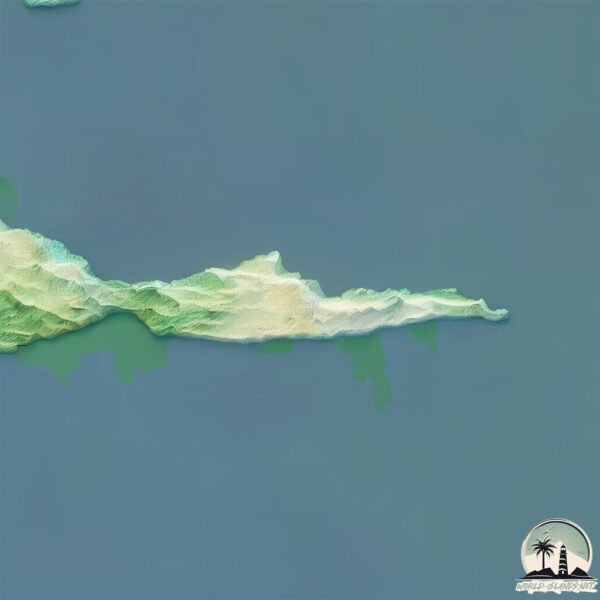Welcome to Frederick , a Temperate island in the Great Australian Bight, part of the majestic Indian Ocean. This guide offers a comprehensive overview of what makes Frederick unique – from its geography and climate to its population, infrastructure, and beyond. Dive into the details:
Geography and size of Frederick
Size: 0.804 km²Coastline: 5.4 kmOcean: Indian OceanSea: Great Australian BightContinent: Oceania
Frederick is a Tiny Island spanning 0.804 km² with a coastline of 5.4 km.
Archipel: –
Tectonic Plate: Australia – A major tectonic plate covering Australia, New Zealand, and parts of the Indian and Pacific Oceans, known for its relative stability and occasional seismic activity.
The geographic heart of the island is pinpointed at these coordinates:
Climate and weather of Frederick
Climate Zone: TemperateClimate Details: Warm-Summer Mediterranean ClimateTemperature: Warm Summer
Climate Characteristics: Characterized by warm, dry summers and mild, wet winters, typical of coastal areas with abundant sunshine Rain is more common in the winter months, maintaining a moderate climate.
Topography and nature of Frederick
Timezone: UTC+08:00Timezone places: Australia/PerthMax. Elevation: 15 m Mean Elevation: 8 mVegetation: Evergreen Broadleaf ForestTree Coverage: 85%
The mean elevation is 8 m. The highest elevation on the island reaches approximately 15 meters above sea level. The island is characterized by Plains: Flat, low-lying lands characterized by a maximum elevation of up to 200 meters. On islands, plains are typically coastal lowlands or central flat areas.
Dominating Vegetation: Evergreen Broadleaf Forest
Vegetation: 1 vegetation zones – Minimal Diversity Island
Infrastructure and Travelling to Frederick
Does the island have a public airport? no .
Does the island have a major port? no .
The mean population of Frederick is 0 per km². Frederick is Uninhabited. The island belongs to Australia .
Continuing your journey, Garden is the next notable island, situated merely km away.
Frederick Island through Peril Bay
Boating past Frederick Island on the West Coast of Haida Gwaii.
Frederick Island through Peril Bay
Boating past Frederick Island on the West Coast of Haida Gwaii.
Boating past Frederick Island on the West Coast of Haida Gwaii.
Frederick Island
This community in Monrovia, Liberia is in serious need of clean water, ...
This community in Monrovia, Liberia is in serious need of clean water, safe concrete bridges, educational and recreational ...
The Buccaneers of St. Frederick Island, by Linda Maria Frank
What can possibly happen when a crime happens under the very noses of ...
What can possibly happen when a crime happens under the very noses of a group of very savvy eighth graders at St. BeSillius' ...
Australia is classified as Developed region: nonG7: Developed economies outside of the Group of Seven, characterized by high income and advanced economic structures. The level of income is High income: OECD.
News – Latest Updates and Headlines from Frederick
Stay informed with the most recent news and important headlines from Frederick. Here’s a roundup of the latest developments.
Loading...
Please note: The data used here has been primarily extracted from satellite readings. Deviations from exact values may occur, particularly regarding the height of elevations and population density. Land area and coastline measurements refer to average values at mean high tide.

